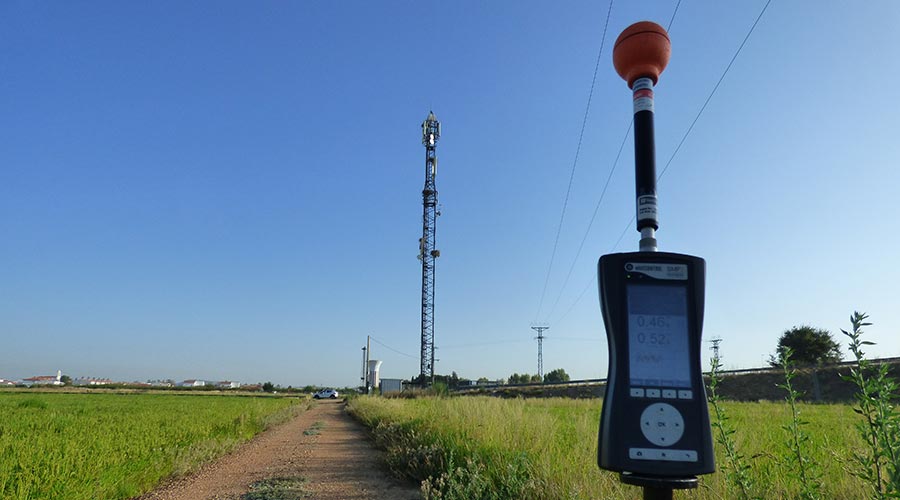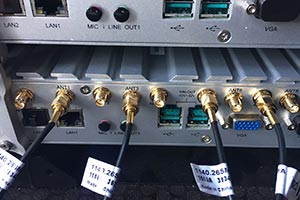What is
interference control and PIM?


A radioelectric interference is the degradation produced in the reception of a useful signal caused by a radioelectric disturbance, this degradation supposes the risk for the correct operation of a certain radiocommunication service. Holders who have an authorization for the use of the public radio domain have the right to protection against harmful interference. Through interference control we are able to measure, detect and neutralize interfering sources, to protect holders authorized to use a certain frequency band.
The passive intermodulation product (PIM), is an effect that occurs in transmission lines due to the non-linearity that occurs in metal-insulator-metal joints with ferromagnetic materials, this causes a non-linear response of signals of different frequencies when these items are found. In this situation, the signals behave like mixers that combine their frequencies to generate new signals at other frequencies.
The passive intermodulation product (PIM), is an effect that occurs in transmission lines due to the non-linearity that occurs in metal-insulator-metal joints with ferromagnetic materials, this causes a non-linear response of signals of different frequencies when these items are found. In this situation, the signals behave like mixers that combine their frequencies to generate new signals at other frequencies.
When an operator detects an incident caused by an increase in RSSI levels received by a radio station, an analysis is carried out to check if this increase is caused by Interference or by Passive Intermodulation Products (PIM):
- Interferences are caused by other radioelectric systems that permanently or intermittently emit some type of signal at a frequency for which they are not authorized, either due to a problem in the installation of the system or because they are not approved equipment, thus becoming mode in interfering foci. In this case, spectral analysis measurements must be carried out and, through a triangulation process, the location of the interfering source must be detected. If the interfering focus is possible, it must be canceled so that the interference disappears, and if the focus is not feasible to cancel, a complaint bulletin must be issued so that the Telecommunications Inspection Services can proceed to turn off the previously identified focus.
- Passive Intermodulation Product (PIM), are caused either by an internal or external element:
- Internal PIM, the non-linearity in the system is caused by an element of the radiant system that is installed poorly or is not in an optimal state, these elements can be passive elements such as hoses, connectors or other elements such as antennas, diplexers or arresters. In this case, to solve the PIM source, the element causing the incident must be properly installed or the aforementioned element must be replaced by another in correct condition.
- External PIM, the PIM focus is caused by an element located outside the radiating system, when there are metallic infrastructures or rusty or deteriorated elements in the vicinity of the radiating antennas, such as railings, braces, asphalt fabrics..., these elements can cause an external PIM problem. In these cases, there are several ways to solve the PIM problem:
- Increase the antenna support to avoid the obstacle.
- Replace a support that may be damaged.
- Replace rusted/damaged material.
- Sanitation of the elements that cause the PIM.
how can we
help you?
In this field, we carry out the following types of activities:
- Interference measurements
- Spectral measurements from the interfered station.
- Spectral measurements in the surroundings of the site.
- Interfering signal identification. - Location and neutralization of interfering source
- Localization by interfering focus triangulation procedure.
- Interfering focus shutdown tests.
- Neutralization of the interfering focus.
- Preparation of a Bulletin for reporting interference if it is not possible to turn off the light. - PIM measurement
- Measurements with PIM analyzer in the radioelectric station.
- Tests with loads.
- Detection of the element that causes the PIM.
- Identification of internal or external PIM. - Internal and external PIM resolution
- Substitution of element within the radiant system that causes internal PIM.
- Use of approved low PIM elements
- Remediation of elements that cause external PIM on the site. - PIM certification
- Measurements with PIM analyzer to verify that an installation has been executed correctly and does not generate PIM problems in a site.
- If PIM problems are identified at the end of the installation, they are corrected to leave the site clean of PIM.
- Elaboration of report of installation finished free of PIM.
Discover our other
related services
Why choose Eurocontrol?

a team of experts at your disposal
of more than 1,400 people specialized in different technical disciplines.

Geographical coverage nationwide
with more than 30 offices and international presence in more than 50 countries through the Apave Group.

Complementary areas of activity
that allow our customers to combine safety and performance at all stages of their projects.




